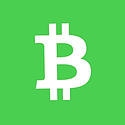![]()
The Federal Reserve’s Federal Open Market Committee kicks off their two-day meeting today amid little fanfare. While announcements from the world’s largest and most important central bank should never be ignored, it feels as if this week’s meeting is the perfect opportunity for the Fed to practice is oft-preached wait-and-see, data-dependent outlook. Already, the central bank has explicitly ruled out an interest rate hike at this meeting, and with no accompanying press conference scheduled, the most market-moving information may emerge from how the Fed describes the US economy’s poor Q1 performance.
Heading into this year, many traders assumed that the Fed would raise rates by June at the latest and that the central bank would hike rates three or four times over the course of the year. However, with the recent sluggishness in the US economy (tomorrow’s advance Q1 GDP report is expected to show the economy grew at just a 1.0% annualized rate), some traders are now questioning whether the central bank will raise interest rates at all this year. While we, like the Fed, will be watching future economic data like hawks (no pun intended), tomorrow’s monetary policy statement comments on the winter slowdown and potential timing of the first rate hike will help tip the scales one way or another, with obvious implications for the value of the US dollar.
In our view, the best way to handicap tomorrow’s statement is to analyze the recent public comments from FOMC voters:
Ø Fed Chairwoman Janet Yellen (Mar. 27): “I believe that the appropriate time has not yet arrived, but I expect that conditions may warrant an increase in the federal funds rate target sometime this year.”
Ø Fed Vice Chairman Stanley Fischer (Apr. 16): “We’d like to see the economy beginning to grow again and grow at a decent rate, and we’d like to see unemployment continue to come down and some signs that inflation is…heading toward the 2% target [before raising rates].”
Ø President William Dudley (Apr. 20): “Hopefully [economic data will] support a decision to lift off later this year… I can’t tell you when normalization will occur.”
Ø Governor Jerome Powell (Apr. 8): “The time [to hike interest rates] is coming, and I do expect it will be this year.”
Ø President Jeffrey Lacker (April 15): “I think a strong case can be made that short term interest rates should be higher right now.”
Ø President Dennis Lockhart (Apr. 16): “[A June rate hike is] not my preference … I think waiting a while longer improves the chances of seeing confirmation from incoming data that the economy is on the desired path.”
Ø President Charles Evans (Mar. 25): “I think economic conditions are likely to evolve in a way such that it will be appropriate to hold off on raising short-term rates until 2016.”
Ø President John Williams (Mar. 23): “I think that by mid-year it will be the time to have a discussion about starting to raise rates.”
As you can see, there’s a wide variety of views on when to hike rates, but a couple of common themes emerge. First, the central bankers remain heavily data-dependent, as we noted above. Secondly, and perhaps most importantly, enthusiasm for a June rate hike has almost completely faded after the recent slowdown (barring uber-hawk Lacker), and most voters imply that they are taking a “see it to believe it” approach when it comes to an improvement in US economic data before raising rates.
Though we don’t anticipate any earth-shattering revelations from tomorrow’s Federal Reserve statement, the US dollar could still see a meaningful reaction depending on how the central bank characterizes the Q1 slowdown and how the statement phrases interest rate expectations. Continued optimism from policymakers could lead EURUSD to reverse off previous resistance near 1.1000, while a dour outlook could drive the pair through that key barrier as traders continue to push out the Fed’s rate hike timeline.
This research is for informational purposes and should not be construed as personal advice. Trading any financial market involves risk. Trading on leverage involves risk of losses greater than deposits.
Recommended Content
Editors’ Picks
AUD/USD extends its upside above 0.6600, eyes on RBA rate decision

The AUD/USD pair extends its upside around 0.6610 during the Asian session on Monday. The downbeat US employment data for April has exerted some selling pressure on the US Dollar across the board. Investors will closely monitor the Reserve Bank of Australia interest rate decision on Tuesday.
EUR/USD: Optimism prevailed, hurting US Dollar demand

The EUR/USD pair advanced for a third consecutive week, accumulating a measly 160 pips in that period. The pair trades around 1.0760 ahead of the close after tumultuous headlines failed to trigger a clear directional path.
Gold bears take action on mixed signals from US economy

Gold price fell more than 2% for the second consecutive week, erased a small portion of its losses but finally came under renewed bearish pressure. The near-term technical outlook points to a loss of bullish momentum as the market focus shifts to Fedspeak.
Bitcoin Cash could become a Cardano partnerchain as 66% of 11.3K voters say “Aye”

Bitcoin Cash is the current mania in the Cardano ecosystem following a proposal by the network’s executive inviting the public to vote on X, about a possible integration.
Week ahead: BoE and RBA decisions headline a calm week

Bank of England meets on Thursday, unlikely to signal rate cuts. Reserve Bank of Australia could maintain a higher-for-longer stance. Elsewhere, Bank of Japan releases summary of opinions.